“Freemasonry may be traced by history and tradition to the remotest ages of the world.”
Every new Mason hears these few words, but few ever learn or are educated on the history of Freemasonry. There are nineteen “Old Manuscripts” written before 1700, detailing the legendary history of Freemasonry.
The first written Masonic manuscript is the Regius manuscript which was written about 1390 AD.
The next written manuscript is the Cooke Manuscript written about 1450 AD. The seventeen later Masonic manuscripts are based on the Cooke Manuscript.
As Freemasonry transitioned from an operative craft to a speculative craft, these manuscripts were used as the basis for the legend of Freemasonry.
The primary purpose of these manuscripts was to establish the operating rules and regulations for the Operative Masons [1] as well as provide a history of sorts of the craft.
The Speculative Freemasons [2] used these manuscripts as the foundation for the three degrees in Freemasonry.
The legend of Freemasonry from the modern era may be found in the Anderson’s [3] Constitutions, where the older versions were rearranged and embellished, and put in sequence by true dates. As stated at the beginning of Anderson Constitution:
“TO BE READ At the Admission of a NEW BROTHER when the Master or Warden shall begin, or order some other Brother to read as follows:” [4] when 47 pages of the legend of Freemasonry was read to each new Mason, thus each new Mason received education on the history of Freemasonry.
Albert Mackey [5] the great Masonic scholar and historian, in his work “The History of Freemasonry” which at least one copy may be found on a dusty shelf in every Lodge, states:
“The traditional history which constitutes the first part of these “Old Records” is replete with historical inaccuracies, with anachronisms, and even with absurdities.
And yet it is valuable, because it forms the germ of that system of Masonic history which was afterward developed by such writers as Anderson, Preston, and Oliver, and from whose errors the iconoclasts of the present day are successfully striving to free the Institution, so as to give its history a more rational and methodic form.”
These old manuscripts and Anderson’s Constitution are fabrications, used by the Operative Masons, and later used by Anderson to promote and sell Freemasonry.
They were in essence a Medieval marketing tool, to establish Royal and Biblical lineage and accreditation.
By the late 1700’s into the 1800’s Masonic Scholars began to trace Freemasonry back through time using academic rigidity and historical facts.
In the Eighteenth and Nineteenth centuries it was popular among Masonic Scholars to attempt to trace Freemasonry to some ancient group.
This included claiming that the source of Freemasonry was the Zoroastrians, Hebrews, Egyptians, Greeks, Romans, Essenes, Christians, or Gnostics among many others. It may be said that the first “Freemason [6] ” was the first human being to lay rock upon rock to build that first altar to worship God, wheresoever and whensoever that may have been.
Through the millennia of time, Freemasons improved their skills in building and worship until we come to today.
The history of Freemasonry must be traced in two paths, first, the knowledge of architecture and engineering, and skills of forming, cutting, laying, and building in stone and brick, and secondly the theology and philosophy of building that eternal temple in the heavens whose walls are built with the soul and spirit of man.
In this paper we will look at the theology, and philosophy, of Freemasonry.
It is impossible to trace the DNA of Freemasonry to any one ancient society or group, however, it may be said that Freemasonry incorporated its theological, and philosophical concepts from the diverse sources they encountered while building temples for many different religions and cultures throughout Freemasonry’s history.
The difference between strictly Operative Masons and Freemasons is that, Operative Masons built secular structures for the use and glory of man, whereas, Freemasons built temples, places of worship and dedicated to the glory of God, hence our Speculative brethren chose the Freemasons to base the craft of building that temple in the heavens not made with hands.
It is impossible to find the exact year that Freemasonry was born, however, it may be inferred that at some time prehistoric man looked up at the heavens and realized that there was a force much greater than himself in the universe, and he felt this overwhelming desire to praise and thank this force for what he had been given.
He developed the concept of building a structure to use as a focal point for this worship. It may have been a wood or stone circle or a wood or stone altar, but it was something at which to congregate and give praise to the Grand Architect of the Universe.
These men who built this first stone structure for worship were the founders of Freemasonry. Early man’s original concept of religion and God would have been based on superstition, fear, and myth.
At first worship would have been based on early man’s observance of the heavens and the movements of the sun, moon, and stars, and the changing of the seasons.
He would not have understood the physical, geological, and atmospheric changes around him and would have feared that storms, drought, earthquakes, failed crops, sickness among other things were punishment from the Gods for his transgressions.
He viewed God as a vengeful God who required sacrifices and obedience from humans. This early religion comprising of many gods from the sun god, moon god, star gods, rain god, fertility god and a god for every important aspect of life would continue from prehistoric times down thru the Egyptians, Greeks, and Romans.
Eventually along the way man would begin to develop an understanding of the principle of the one and true God and his workings.
Since God is beyond the capacity of man to understand, man had to assign symbols and attributes to God, in an effort to explain God and his plans and designs for mankind.
Throughout the millennium man has used symbols and allegories to explain God and God’s will, where important lessons are hidden within, only to be discovered by those with the ability to understand. We need to go back to around 5000 BC to find the early concepts of religion by ancient peoples.
Aryans

Aryan wall engraving c 5000 BC
IMAGE: the square magazine digital collection
Linguists have studied the history of language and identified a language that appears to have originated around 5000 BC.
These peoples lived to the east and south of the current day Caspian Sea and are referred to as Aryan.
These Aryans were herders and traveled from mountain to valley as the seasons changed. As the climate changed, they would move to find more suitable pasture lands for their herds.
Eventually they were living in what is now northeastern Afghanistan, north of the current city of Kabal.
For reasons that are unknown the Aryan peoples split into two separate groups, the Indo-Aryans, and the Irano-Aryans. Linguists have traced the Irano-Aryans as having settled in Persia or modern-day Iran.
The Indo-Aryans migrated into India, also into Europe, with one of the first European migrations being the Celtic peoples.
It is believed that this migration into Europe by the Indo-Aryans began circa. 4500 – 2000 BC. This would have been before the development of modern religious theology, when the Aryans were still worshipers of Gods represented by heavenly bodies and the earthly environment.
They would have, like all other ancient peoples worshiped, feared, sacrificed, and bowed down before a multitude of Gods. The early migrations would have spread these old myths and religion into eastern then western Europe.
Friedrich Max Müller [7] was a linguist and religious scholar who translated and interpreted many ancient religious manuscripts.
One of the manuscripts he studied is the Veda (composed between 1500 – 1200 BC) [8], which is any of four canonical collections of hymns, prayers, and liturgical formulas that comprise the earliest Hindu sacred writings. Others were the Gathas and the Zend-Avesta (circa. 1000 BC) [9] the books of the sacred writings of Zoroastrianism.
These texts are attributed to the Aryans, who are the original worshipers of Hinduism and later worshipers of Zoroastrianism. Many scholars consider the Aryans to be the founders of western religious theology as stated in both the Veda and the Zend-Avesta.
Albert Pike [10] the great Masonic scholar, theologian, linguist, and philosopher states: “That the original seat of the Aryan civilization was in Sogdiana [11], and that those remote ancestors of ours ranged as herdsmen, like the Tatar tribes [12], over the Asian Steppes [13], except so far as a part of them cultivated the soil, is amply proven by both the Verda and Zend-Avesta.” [14]
Zoroastrians [15]

Zoroaster or Zarathustra was a religious prophet and the spiritual founder of Zoroastrianism
IMAGE: the square magazine digital collection
Zoroaster or Zarathustra was a religious prophet and the spiritual founder of Zoroastrianism. His theology, particularly monotheism was the first in the world, and had a significant impact on modern western theology.
There is no date agreed upon for his birth and life, however generally it is considered circa. 1500 BC. According to Gathas [16], when Zoroaster was around 15 years of age he was trained as a priest of the early Hindu religion from the Veda, and at the age of 20 years of age he left his parents and began traveling and studying.
At the age of 30, Zoroaster experienced a revelation during a spring festival; on the riverbank he saw a shining being, who revealed himself as Vohu Manah (Good Purpose) and taught him about Ahura Mazda (Wise Lord) and five other radiant figures. Zoroaster soon became aware of the existence of two primal spirits, the second being Angra Mainyu (Destructive Spirit), with opposing concepts of Asha (order) and Druj (deception). [17]
Thus, he decided to spend his life teaching people to seek Asha. He received further revelations and saw a vision of the seven Amesha Spenta, and his teachings were collected in the Gathas and the Avesta.
Eventually, at the age of about 42, Zoroaster received the patronage of queen Hutaosa and a ruler named Vishtaspa, an early adherent of Zoroastrianism (possibly from Bactria according to the Shahnameh).
According to the tradition, he lived for many years after Vishtaspa’s conversion, managed to establish a faithful community, and married three times. His first two wives bore him three sons, Isat Vâstra, Urvatat Nara, and Hvare Chithra, and three daughters, Freni, Thriti, and Pouruchista.
His third wife, Hvōvi, was childless. Zoroaster died when he was 77 years and 40 days old. The later Pahlavi sources like Shahnameh instead claim that an obscure conflict with Tuiryas people led to his death, murdered by a karapan (a priest of the old religion) named Brādrēs.” [18]
We find the philosophy and theology of Zoroastrianism is primarily laid out in the Gathers, which are a series of interrogative poems where Zoroaster questions Ahura Mazda who intern provides the answers, much the same as in Masonic catechism.
The Zend-Avesta sets the laws and standards by which a pure life is lived, it also establishes penalties and atonement rituals for those who have not followed the law. Zoroaster in the Gathas is focused on “Truth” and “Justice” in his interrogative with Ahura Mazda. It becomes clear that Zoroaster considers the only real “Truth” and “Justice” is God’s “Truth” and “Justice.”
Interestingly we find that Pythagoras, along with his disciples Socrates, and Plato, spent much of their lives trying to define “Truth” and “Justice” without avail. They determined that the only “Truth” was that which was proven by numbers.
When it came to “Justice,” they were never able to define it. Zoroastrians believe since Ahura Mazda created the entire universe, that his creation is holy and is to be preserved.
Part of their worship is the worship of fire, water, earth, and air, which makes them the first environmental religion in history.
This tenet of religion had died out or was relegated to primitive groups for millennia, to be reinstated in modern western governments in the 20th century. Zoroastrians believe it is a sin to contaminate the air, water and land and work hard to keep from spreading contamination.
Zoroaster developed a theology that was eventually incorporated into Greek Religion, Judaism, Christianity, and Islam.
This theology was different and radical; it had never been practiced in the world before. It was to totally change the way peoples on earth understood and worshiped their God.
The first and most important theological concept was that of monotheism, one all-powerful God, supreme being, creator of all who rules over everything, and is known by his name Ahura Mazda. Yasna [19] 31, Verses 7 & 8:
“He who in the First Beginning thus thought: Let the glorious heavens be clothed in light; He by His supreme understanding created the principles of Truth and Light; Enabling mortals thereby to maintain the Good Mind.
O Wise Lord, O ever-the-same Ahura, by Thy Holy Spirit make these realms flourish. Not only did I conceive of Thee, O Mazda.
As the very First and the Last, As the Father of the Good Mind, As the veritable Creator of Truth and Right.
As the Lord Judge of our actions in life, I beheld these with my very eyes!”
Zoroaster conceived that not only was Ahura Mazda the one true and supreme God, but was also the God of all the peoples of earth.
Yasna 43, Verse 11:
“Verily I believed Thee O Mazda Ahura, to be the Supreme Benevolent Providence, When the Good Mind came to me with enlightenment, when first I received and became wise with Thy words, And though the task be difficult, and hardship may come my way, I shall proclaim Thy message, which Thou declares to be the best.”
His second important theological concept was the concept of dualism, good and evil, light, and dark, truth and untruth, and the eternal battle between opposites, their names are the Spirit of Goodness (Spenta Mainyu), and the Spirit of Evil (Angre Mainyu).
Yasna 30, Verse 3:
“In the beginning there were two primal spirits, Twins spontaneously active, these are the Good and the Evil, in thought, and in word, and in deed. Between these two, let the wise choose a right. Be good, not base!”
We not only find this concept being used in modern religion, but also in politics and the entertainment industry.
The theme of good fighting evil is prolific throughout politics, with opposing parties painting the other party as evil, and the pervasive good against evil fight in our entertainment industry.
Religious scholars consider these first two concepts as the Zoroastrian holy trinity, Ahura Mazda, Spenta Mainyu and Angre Mainyu, a concept later incorporated into Christianity as the Holy Trinity of: God the Father, the Son, and the Holy Spirit.
The third new theological concept is the free will of man. Everyman has free will to live his own life as he sees fit, however he alone will bear the burden of his actions.
Yasna 30, Verse 2:
“Hearken with your ears to these best counsels, Reflect upon them with illumined judgment. Let each one choose his creed with that freedom of choice each must have at great events. O ye, be awake to these, my announcements.”
Zoroaster’s fourth theological concept was to eliminate the ancient customs or great ceremonial rites and blood sacrifices, instead to worship God with thoughts, words, and deeds.
“The Good-Mind enables us to grasp Asha, (Asha always carries the joint meaning of Truth and Righteousness.) the Ideal Truth; it also enables us to see any aspect of the world and recognize it for what it is, i.e. the way and the extent to which it is flawed.
This is grasped by seeing reality and realizing how it deviates from its ideal state, i.e., Asha. This form of moral awareness is what is termed good thought.
From this good thought one is inspired to do the right thing, to right the wrong, to perfect the state of imperfection. When the appropriate course of action is formulated and articulated it is called good word.
The inspiration that leads to action is Spenta Armaity, translated in the religious context as Piety or Devotion, and in the moral context as Benevolence or Right-Mindedness.
This spirit is another aspect of Divinity; it inclines us to move from right conceptions to right actions. We thereby, with courage and confidence, put our well-thought-out and well-formulated intentions into actions.
This is called good deed. Here we can crystallize the oft-repeated trilogy of Zoroastrianism: Good thoughts, Good-words, and Good-deeds.” [20]
Zoroaster developed the theological concept of life after death, and the concept that man’s life and actions here on earth would determine his status after death.
“The religion also asserts the existence of the soul (Fravasi) and the resurrection of the body at the time of the Great Renewal that will come one day. The soul, created by Ahura Mazda, is immortal and will be judged immediately after the death of the body.” [21]
He developed the theological theory of the final judgement day when each man would be judged for actions during his life.
“The soul enters the way made by Time, and open both to the wicked and to the righteous. At the head of the Kinvad bridge, the holy bridge made by Mazda, they ask for their spirits and souls the reward for the worldly goods which they gave away here below. Then comes the well-shapen, strong and tall-formed maid with the dogs at her sides, one who can distinguish, who is graceful, who does what she wants, and is of high understanding. ‘She makes the soul of the righteous one go up above the Hara-berezaiti; above the Kinvad bridge she places it in the presence of the heavenly gods themselves.” [22]
“Life after death in the Gathas is viewed as a state, the character of which is a consequence of the moral quality of one’s life. The notion of the final judgment upon the person is expressed dramatically in the crossing of the Bridge of the Separator (chinvad peretu), where the virtuous cross to the Abode of Songs, the heavenly abode, and exist in a state of “Best Consciousness.” [23] The wicked fall away into the House of Falsehood, existing in a state of “Worst Consciousness,” detached from Truth.” [24]
As the Zoroastrians migrated into India and Persia, they began to settle down and build more permanent structures.
The oldest Zoroastrian Temple still standing today is “The Fire Temple of Yazd” located in Yazd province, in central Iran, and is dated to 470 BC, however it can be inferred that Zoroastrian Temples were built long before this date.
In the 7th Century AD the Muslims conquered Babylon and the Zoroastrians slowly disappeared thru conversion and persecution. The remaining Zoroastrians slowly moved to India where most of the Zoroastrians live today.
It would be safe to infer that if all the remaining Zoroastrians were gathered together in one place, they would be pressed to fill a major college football stadium, however it is also safe to infer that the impact of Zoroaster and Zoroastrians on the world today is greater than any other man or even culture that ever existed.
Today, “Zoroastrians do not proselytize, and consequently Zoroastrians are born to the faith.
If a Parsi woman marries outside the religion, her children cannot be Zoroastrians, but if a man marries outside the religion, his children may become Zoroastrians, although his wife cannot.
No doubt these restrictions are later aberrations not befitting the lofty ideals and teachings of the religion.” [25]
Albert Pike says about the hymns of Zoroaster:
“The singular interest and value of the hymns consist not alone nor even chiefly in the intrinsic value of their doctrine and religious philosophy.
The value and interest are very great even when so considered, and still more so when we consider the age in which these doctrines were promulgated.
But they are immensely enhanced by the fact that we find in them the source of much whose origin has been heretofore unknown, and doctrines, ideas and conceptions fully developed that have been reproduced in identical terms, in all the later religious and philosophical systems of the world.
“Ex Oriente Lux” [26] proves truer than the world has believed. It is the light of the Zend-Avesta that illuminates the pages of Pythagoras and Plato, of Philo and Plotinus and Proclus. Its ideas are theirs, as they are the ideas of the Kabbalah and the Gnostics, of Saint John and Saint Paul: and we in our conception of the Deity, worship, only by another name, the Ahura Mazda adored by Zarathustra. It is a new chapter in the material history of the world and of our race.” [27]
Listed here are just a few of the theological concepts that were created by Zoroaster and incorporated into every major religion today: Monotheism, God is Light, Dualism, Holy Trinity (Good thoughts, Good-words, and Good-deeds), Angelology (Angels of God or Prophets), Soul of man, Life after death, Resurrection, Free will, and Eschatology (Final Judgement).
Confucianism and Buddhism

Confucianism founded in the c 5th Century BC
IMAGE: the square magazine digital collection
This paper will not address the eastern religions of Confucianism or Buddhism both of which were founded in the 6th or 5th Century BC.
The only comment is that by the time Confucianism and Buddhism were founded, Hinduism and Zoroastrianism were firmly established.
It may be inferred that the principle teachings of Hinduism and Zoroastrianism had traveled east as well as west and were well known to both Confucius and Buddha at the time they were developing their philosophies.
Greek Religion

ancient Greek Gods
IMAGE: the square magazine digital collection
The ancient Greek Religion as that of the Egyptians and Romans, consisted of many Gods, each one representing a physical or moral attribute.
It reflected all the old myths and beliefs of the ancients. Pythagoras lived in Greece and Italy between 570 and 495 BC; he was a mathematician, scientist, and philosopher.
He called himself a philosopher, however, his most famous work was in mathematics and geometry. Pythagoras led Greek Religion out of superstition and myth into the age of modern western theology.
His students were called Pythagoreans, and they were actively teaching his philosophy and theology in Greece, Italy, and Egypt as late as the early centuries AD.
Pythagoras’ early life consisted of study. As an aristocrat he was privileged to attend school and learn grammar, rhetoric, logic, arithmetic, geometry, music, and astronomy. In the Middle Ages these courses of learning were referred to as the Seven Liberal Arts, and were incorporated into Freemasonry by the academics and scholars of the 1600’s.
By the age of 20 years, he was ready to advance his studies and began to travel and study throughout the eastern Mediterranean area, until he reached the age of 40 years when be returned to Greece.
Pythagoras was born around 570 B.C. to Mnesarchus of Samos, a gem engraver, and his wife, Pythais. As with all the Greek philosophers, Pythagoras was born into the aristocracy of Greece. Greece had a very rigid class structure, where only the rich, famous, and powerful received the benefits of society.
Greece having a long history of building in stone, and because of the good education he was afforded, it may be inferred that Pythagoras was familiar with the stone masons and the basic principles of architecture.
Pythagoras lived during the great age of Greek architecture when magnificent temples were being built throughout Greece.
In fact, it is reported that at Pythagoras’s birth, his father had a temple to Apollo constructed so he could give thanks for Pythagoras’s birth.
The stone masons would have been revered members of the artisan and craftsman class with much useful knowledge in the application of arithmetic and geometry.
Pythagoras’s insatiable drive to learn makes it easy to infer that he would study architecture wherever he traveled.
At this point his quest for knowledge was not quenched and he had the strong urge to further his education.
In his eighteenth year, Samos began to be ruled by the tyranny of Polycrates, who was oppressive to the intellectuals of the town, therefore Pythagoras found it necessary to leave Samos and to continue his studies in foreign lands.
In the life of Pythagoras, we find myth and reality mixing, creating the mythos of Pythagoras, which will in many instances parallel the life of Jesus Christ.
It may be pointed out that the legend of Pythagoras having a divine birth and being the son of the Greek God Apollo was prevalent in ancient times. Iamblichus, the Syrian philosopher, who lived between 250 and 325 AD, was an important Neoplatonic philosopher who wrote in his book “The Life of Pythagoras:”
“The assertions of Epimenides, Eudoxus and Xenocrates, that Apollo having at that time already had actual connection with Parthenis, causing her pregnancy, had regularized that fact by predicting the birth of Pythagoras, are by no means to be admitted.
However, no one will deny that the soul of Pythagoras was sent to mankind from Apollo’s domain, having either been one of his attendants, or more intimate associates, which may be inferred both from his birth and his versatile wisdom.” [28]
Upon leaving Samos, Pythagoras first traveled to Syria. In those days it was extremely dangerous for a lone traveler to travel to foreign lands, and one had to be rich to afford the travel. Pythagoras being a young man, would have used his father’s business connections in Syria to make introductions to the Syrian aristocracy and then to the intellectuals and religious thinkers.
In Syria he studied under the great masters and was initiated into the mysteries. He moved through Syria visiting several towns and studying under the great priest and magi, where he learned the great mysteries.
In Syria he would have also studied mathematics, since Syria intellectuals were known to be advanced in the study of mathematics. It is said that his reputation began to precede him, and he was welcomed as a student and a teacher.
When leaving Syria, he boarded a boat traveling to Egypt. The sailors decided to sell him as a slave when they docked in Egypt, however they were so impressed with him during the journey, that they allowed him to continue his travels to Egypt.
When Pythagoras arrived in Egypt, he sought out the highly regarded temples and high priest where he studied and learned the great mysteries.
He moved throughout Egypt visiting all the great temples and studying under all the great priests, learning the ancient mysteries of the Egyptians.
In Egypt he continued his work in geometry and astronomy. He also studied the Egyptian religion and their regard for the sun, the moon, and the planets. Some historians report that while in Egypt, he was taken captive by the soldiers of Cambyses, and carried off to Babylon, where he was recognized by the Parsees as a man of great learning and was allowed to study the theology and philosophies of Zoroastrianism.
In Babylon he studied the teachings of Zoroaster and learned about reincarnation from the Hindus. Some historians say at the age of 40 years, some say at the age of 56 years, he returned to his hometown of Samos where he set up a school in a cave.
Finding Samos still being ruled by tyrants and that the rulers were still oppressive of the intellectuals, and he therefore decided to move on to Italy.
Once Pythagoras arrived in Croton, he was recognized, and his reputation having preceded him, was welcomed and invited to speak in the amphitheater, where the crowds were so impressed they requested he reorganize the government and become a permanent resident. Pythagoras quickly set up a school and began to teach.
Other local towns, having heard of his reputation, asked him to consult with them in reorganizing their governments.
Pythagoras settled in Croton and students came from all over the Mediterranean to study under him.
Pythagoras taught a course of study which would be called the Seven Liberal Arts. Pythagoras’ primary focus of study was numbers, and believed that Numbers are “the principle, the source and the root of all things.”
He would go on to make major advancements in the study of numbers and mathematics, and is sometimes referred to as the “Father of Geometry.”
This knowledge would go on to enable the Freemasons of the Middle Ages to build the most magnificent structures, however here we are focusing on his theology.
That theology consisted of incorporating concepts from Zoroastrianism such as: a God who was the one and true God, the Grand Architect of the Universe.
The other Greek Gods were just his servants. He taught dualism and the eternal fight between good and evil. He believed in life after death and reincarnation.
Pythagoras taught that every soul was created at the creation of the universe and a soul would be infused into man.
When a man died God would evaluate his soul and determine if it were perfect, if not it would be returned to another man to grow and improve until it was perfect.
“Pythagoras claimed that God was so impressed with his previous life that he granted him any wish, which Pythagoras wished he would be able to remember his previous lives which God granted.
Later Pythagoras fully accepted the Orphic [29] belief in transmigration or “reincarnation”—in fact, he is said to have possessed the power to remember his previous lives, and the ability to remind his associates of theirs as well.” [30]
Later Pythagoreans revised this theology to believe in the soul and life after death but not reincarnation. Pythagoras taught the free will of man.
The students of Pythagoras would go on to teach the lessons of Pythagoras for over five hundred years. His greatest followers would slightly modify the lessons.
Socrates and Plato would go on to expand and teach Pythagoras’s theories. Pythagoras spent a great deal of time on the concept of justice and a just God. Socrates and later Plato focused much of their effort on the concept of justice.
In fact, Plato’s writings focused so much on justice that one could safely state that he was obsessed with defining justice.
“The grand project behind Plato’s Republic is to define the nature of justice. We know that the Pythagoreans identified justice with proportion, especially geometrical proportion, because it is through proportion that “each part receives what it is due.” [31]
Following the Pythagorean tradition, Plato observes that in the realm of society justice exists when each part of society receives its due and is able to achieve the function for which it is truly best suited. Justice, as a universal principle, operates in exactly the same fashion in the realm of the soul.
There, “justice is produced in the soul, like health in the body, by establishing the elements concerned in their natural relations of control and subordination, whereas injustice is like disease and means that this natural order is inverted.” [32]
As Plato notes, in a magnificently Pythagorean passage: …
“The just man does not allow the several elements in his soul to usurp one another’s functions; he is indeed one who sets his house in order, by self-mastery and discipline coming to be at peace with himself.”
Pythagoreans spent significant time on the concept of truth and in particular in defining truth, without avail. Pythagoras, Socrates, and Plato believed the only “truth” was that which could be verified with mathematics.
All other “truth” could be invalidated by the use of logic. Another focus was the virtue of toleration.
In fact, it may be said that Pythagoras developed the concept of what would become the four cardinal virtues, Prudence, Toleration, Fortitude, and Justice.
The Essenes and Christians would later adopt most of the theological and philosophical teachings of Pythagoras. Thus, we find the major theological concepts of Pythagorean religion are: Monotheism, Dualism, Angelology (Angels of God or Prophets), Soul of man, Life after death, Resurrection, Free will Justice, and Eschatology (Final Judgement), along with the virtues of Prudence, Toleration, Fortitude, and Justice.
Judaism

Abraham circa. 1813 BC, founder of the Jewish people and their religion
IMAGE: the square magazine digital collection
In Judaism, Abraham was born circa. 1813 BC and is the founder of the Jewish people and their religion. Moses was born circa. 1391 BC and is the author of the Torah, the “Law of Moses” or the “Old Law,” which was to lead and guide the Jewish people to this day.
The Hebrew Religion, from the beginning was an ethnic, racial, tribal religion that did not seek converts, but isolated itself from all others.
The religion is a history of the chosen people and their relationship with God, that tells of a chosen people who have made bad choices, a vengeful God reaping his punishment on his chosen people, and prophets that God sent to lead his chosen people out of sin and into the promised land.
We can see similarities between the theology being developed by the Aryans and the theology being developed by the Jewish people during this period. Since the Indo-Aryans were migrating into eastern Europe and the eastern Mediterranean during this time in history, it would not be surprising to see their theology being incorporated into the native peoples.
The primary theological concept of Judaism is that there is one and only one God, who alone created all the heavens and the earth, and is active today in affecting world affairs. Unlike Zoroastrianism and Christianity where God is a trinity of three attributes, God is one and cannot be divided into sub-Gods.
As in Zoroastrianism where God is represented by fire, we find God in Judaism represented in the tower of fire leading the Hebrews thru the desert, and God as the burning bush, instructing Moses in the ten commandments.
The beginning of the Bible says that;
“In the beginning God created the heaven and the earth. And the earth was without form, and void; and darkness was upon the face of the deep. And the spirit of God moved upon the waters. And God said, Let there be light: and there was light.”
Zoroaster in Yasna 31 verse 7 states:
“He who in the First Beginning thus thought: Let the glorious heavens be clothed in light; He by His supreme understanding created the principles of Truth and Light;”
The second theological concept is that God made a covenant with the Jewish people that guaranteed the land of Canaan (which is now Israel) to the Jews.
The third theological concept is that God is a just God, and he will punish those who disobey his will. A fourth theological concept is that because God is a vengeful God, continual sacrifices must be offered along with prayers for forgiveness.
Because of this the Temple became the most important central point of the religion.
Judaism has no central core beliefs, doctrine, dogma, or binding articles of faith, as do Christianity and Islam.
Rather these tenets are incorporated into their liturgy. Attempts have been made over the years to develop a common list of tenets; however, the many wide and varied denominations of Judaism have not been able to agree, hence each Jew may interpret the scriptures as he believes.
The ancient historian Josephus emphasized practices and observances rather than religious beliefs when describing Judaism. [33]
King Solomon reigned over Israel from circa 970–931 BCE at which time the First Temple at Jerusalem was constructed.
The Temple was the most holy place for the Jews and housed the Arc of the Covenant. Jews would come to the Temple to worship and sacrifice to God, as it was the center of their religion. The story of King Solomon’s Temple was to become the pinnacle of the legend of Freemasonry.
Nebuchadnezzar II of the Neo-Babylonian Empire laid siege to Jerusalem, destroyed the Temple, and carried the Jews off to Babylonia in 587 BCE. During the captivity, the Jews incorporated Zoroastrian theology into Judaism.
Many scholars believe that when the Jews returned to Judah that the Sadducees maintained the “Old Law of Moses,” while the Pharisees incorporated theology from the Zoroastrians into the “Law of Moses.”
Pike states in his book “Morals and Dogma:”
“The dominant system among the Jews after their captivity was that of the Pharoschim or Pharisees.
Whether their name was derived from that of the Parsees, or followers of Zoroaster, or from some other source, it is certain that they had borrowed much of their doctrine from the Persians.” [34]
The Encyclopædia Britannica states:
“The debt of Israel to its Eastern neighbours in religious matters is easy to demonstrate on a few precise points of minor importance but less so in other more important points, such as dualism, angelology, and eschatology.
Chapters 40 through 48 of the Book of Isaiah offer striking parallels with the third and fourth verses of Gāthā 44.
Besides the common procedure of rhetorical questions, there is the notion of a god who has created the world and, notably, light and darkness.
The very idea of a creator God may be common to all of the western part of the Semitic world. But the notion that God created light and darkness appears in both prophets.
It is true that Zarathushtra associates light and darkness only to waking and sleep and that no Iranian text says that God created good and evil.
Nevertheless, the juxtaposition, in the Book of Isaiah, of light–darkness with good–evil sounds remarkably Iranian.
After the exile, the traditional hope in a messiah-king of the house of David who would reestablish Israel as an independent nation and make it triumph over all enemies gave way gradually to a concept at once more universal and more moral.
The salvation of Israel was still essential, but it had to come about in the framework of a general renewal; the appearance of a saviour would mean the end of this world and the birth of a new creation; his judgment of Israel would become a general judgment, dividing human beings into good and evil.
This new concept, at once universal and ethical, recalls Iran so strongly that many scholars attribute it to the influence of that country.” [35]
After the Edict of Cyrus or the proclamation by Cyrus the Great, in 539 BCE which allowed the Jews to return to Jerusalem, the Second Temple was constructed.
At this time two major sects of Judaism were formed, the Sadducees, and the Pharisees. The Sadducees were the high priests and guardians of the Temple, while the Pharisees were the religious leaders of the common people, lived throughout Judah and rarely worshiped at the Temple.
Around 150 BC a third sect appeared, who were known as the Essenes. The Sadducees were followers of the “Law of Moses” and the Pharisees, while followers of the “Law of Moses” also incorporated concepts found in Zoroastrianism.
The Pharisees introduced several of the theological concepts of the Zoroastrians, including Angelology (Angels of God or Prophets) and Eschatology (Final Judgement).
Therefore, the major theological concepts of Judaism are Monotheism, God represented as light and fire, Covent with God, Just God, Vengeful God, Angelology (Angels of God or Prophets), and Eschatology (Final Judgement).
Essenes

Essenes were a Hebrew sect that lived during the Maccabean period (150 BC to 70 AD)
IMAGE: the square magazine digital collection
The Essenes were a Hebrew sect that lived during the Maccabean period (150 BC to 70 AD). The Maccabean period was a time of change in the political, social, and religious practices in Judea. Ideas from the east and west came together and what emerged was the new religious doctrines that exist today.
The Essenes and particularly the Essene community at Qumran have left an impact on modern western religious thinking and philosophy.
The Essenes existed for two centuries and were an enigma believed to be only on the fringes of religious thought. With the 1946/7 discovery and translation of the Dead Sea Scrolls we now find that many of the principles of modern western religious doctrine and philosophy were first developed and established by the Essene community at Qumran.
The end of the Essenes coincided with the life of Jesus Christ and the beginning of Christianity. By 70 AD all traces of the Essenes had disappeared. We know from the historian Josephus[36], that John the Baptist was an Essene.
It can be inferred from Josephus and the Bible that it was probable that Jesus studied with the Essenes and lived with the sect some or all the years between the ages of 12 and 30 years of age. A lengthy discussion could be had here on the connection between the Essenes and early Christians, however, that is beyond the scope of this paper.
There are many parallels in Essene, Christian and Masonic thought. Furthermore, Albert Pike when he developed the Seventeenth Degree of the Ancient Accepted Scottish Rite of Freemasonry, set the degree in the Maccabean period, and includes the three major sects of the period: Essenes, Pharisees, and Sadducees.
Pike believed that the Essenes were the transition from the “Old Law” to the “New Law,” when the old law of the Hebrews with its sacrifices and self-deprivation to a vengeful God changed to a loving and forgiving God.
Thus, in the seventeenth degree he ends with the Essenes ending a period in history and in the eighteenth degree the Christians beginning a new period in history.
During the Maccabean period in Judea there were three major sects of Judaism: the Sadducees, the Pharisees, and the Essenes. The Sadducees were the traditional Jews who worshiped in the Temple and offered blood sacrifices to God.
The Pharisees were the more progressive Jews who worshiped in Synagogues, incorporated some Zoroastrianism into their worship, and only occasionally worshiped in the Temple and offered sacrifices.
The Essenes were extremely strict interpreters of the Law and students of the Pentateuch; they never worshiped in the Temple or offered sacrifices; however, they were also students of Zoroastrianism and the Greek philosophers which they include in their worship of God.
Pythagoras, who traveled throughout the ancient world and studied under all the great Maji of the time, was particularly influential in Essene doctrine.
Josephus in his writings establishes the Essenes and the Therapeutae in Egypt as being the same religious sect. The Essenes as well as the Therapeutae were believed to have the power of healing.
They were also both believed to have the power to predict the future. More details may be found in “The Works of Josephus.” [37]
Christianity

Jesus Christ
IMAGE: the square magazine digital collection
Jesus Christ lived, worshiped, studied, and preached in the same community as the Essenes. As said above some scholars believe that Jesus may have studied with the Essenes or at least was familiar with them.
From the Bible we learn that Jesus and John the Baptist were cousins, and we know from Josephus that John the Baptist was an Essene. From Jesus’ teaching as found in the Bible many of the lessons compare favorably with the teachings of the Zoroastrians and the Hebrews.
The books of the New Testament written by Paul and the other apostles contain threads of theology found in the writings of Zoroaster and Pythagoras. St. John in his Gospel of St. John based much of his philosophy on God as light as did the Zoroastrians.
St. John in the Gospel of John, Chapter 1, verse 1 thru 5, King James Version, says
“In the beginning was the Word, and the Word was with God, and the Word was God. The same was in the beginning with God. All things were made by him; and without him was not any thing made that was made. In him was life; and the life was the light of men. And the light shineth in darkness; and the darkness comprehended it not.”
Zoroaster in Yasna 31 verse 7 says:
“He who in the First Beginning thus thought: Let the glorious heavens be clothed in light; He by His supreme understanding created the principles of Truth and Light; Enabling mortals thereby to maintain the Good Mind. O Wise Lord, O ever-the-same Ahura, by Thy Holy Spirit make these realms flourish.”
St. John in his Book of Revelation Chapter 22, verse 13 and 14, King James Version, he says:
“I am Alpha and Omega, the beginning and the end, the first and the last. Blessed are they that do his commandments, that they may have right to the tree of life, and may enter in through the gates into the city.”
Zoroaster in Yasna 31 verse 8 he says:
“Not only did I conceive of Thee, O Mazda as the very First and the Last, As the Father of the Good Mind, As the veritable Creator of Truth and Right. As the Lord Judge of our actions in life, I beheld these with my very eyes!”
Albert Pike had this to say about Jesus:
“Behold the object, the end, the result, of the great speculations and logomachies of antiquity; the ultimate annihilation of evil, and restoration of Man to his first estate, by a Redeemer, a Masayah, a Christos, the incarnate Word, Reason, or Power of Deity.
This Redeemer is the Word or Logos, the Ormuzd of Zoroaster, the Ainsoph of the Kabalah, the Nous of Platonism and Philonism; He that was in the Beginning with God, and was God, and by Whom everything was made.
That He was looked for by all the People of the East is abundantly shown by the Gospel of John and the Letters of Paul; wherein scarcely anything seemed necessary to be said in proof that such a Redeemer was to come; but all the energies of the writers are devoted to showing that Jesus was that Christos whom all the nations were expecting; the “Word,” the Masayah, the Anointed or Consecrated One. [38]
Pike went on to say: “When, lo, a voice, in the inconsiderable Roman Province of Judea proclaims a new Gospel—a new “God’s Word,” to crushed, suffering, bleeding humanity. Liberty of Thought, Equality of all men in the eye of God, universal Fraternity! a new doctrine, a new religion; the old Primitive Truth uttered once again! … Jesus of Nazareth, the “Son of man,” is the expounder of the new Law of Love. He calls to Him the humble, the poor, the Pariahs of the world.
The first sentence that He pronounces blesses the world, and announces the new gospel: “Blessed are they that mourn for they shall be comforted.” He pours the oil of consolation and peace upon every crushed and bleeding heart. Every sufferer is His proselyte. He shares their sorrows, and sympathizes with all their afflictions.” [39]
It can be fairly said that the beginning of Christianity was the culmination of God’s enlightenment of man through his prophets and concluding with the “Son of Man.” God through Jesus Christ gave the “New Law” to free man from sin.
The Essenes, Christianity, and Freemasonry

17th century operative masonry guilds began to change to a speculative craft freemasonry
IMAGE: the square magazine digital collection
In the 1600’s Freemasonry began to change from an operative guild to a speculative craft. There is no doubt that this new speculative craft was built on the foundation of Christianity, in that the operative Freemason’s in England were all Christian and actively building Christian cathedrals, however, these new Speculative Freemasons were the intellectuals of the time and engaged in restoring the study of the ancients.
In doing so the new Speculative Freemasons began to infuse and restore cultures from the ancient cultures of Greece, Egypt, Persia, and India, into the new Speculative form of Freemasonry.
These new Speculative Freemasons were the scholars and academics of the period. They understood that Freemasonry was a vehicle to bring academia out of the “Dark Ages” back into the light.
The study of the ancient religions from the east and west along with the great philosophers of Greece and Egypt had been suppressed by the church for over a thousand years and were now being brought to light.
They therefore took the operative Freemason’s moral and ethical teaching using the symbols of the craft and infused them with additional lessons and moral and ethical teachings of the ancient cultures of Greece, Egypt, Persia, and India.
Therefore, Freemasonry based the fraternity’s philosophy, principles, and code of moral and ethical conduct on Hebrew and Christian traditions, while including doctrines from ancient Greece, Egypt, and Eastern religions.
Modern Freemasonry developed the Masonic degrees beginning in the Seventeenth and Eighteenth Centuries by incorporating esoteric symbols and allegories borrowed from religions and cultures of the past.
Albert Pike, the great Masonic scholar, and writer inserted the Essenes into Freemasonry when he revised the 17th Degree of the Ancient Accepted Scottish Rite.
Pike understood that the Essenes were the critical point of transition in religious history between the ”Old Law,” where God was a vengeful God requiring sacrifice and self-degradation from man, and the “New Law,” where God was a loving and forgiving God.
He therefore placed an immense importance on the Essenes and their impact on Freemasonry.
In the mid 1800’s, it was popular among Masonic writers to claim that Freemasons were descendants of the Essenes.
While there is no physical evidence to validate this claim, there is much circumstantial evidence to show that Freemasons based much of their teachings on that of the Essenes.
In his paper “Freemasonry and its Relation to the Essenes” William Westcott goes to great lengths to discredit the authors from the 1800’s. Mr. Westcott’s arguments ignore all the information obtained from the Dead Sea Scrolls, since the Dead Sea Scrolls were discovered and interpreted after his book was written.
The Dead Sea Scrolls validate the historical writings by Josephus, Philo, and Pliny, along with providing much additional information on the Essene community. A case may be made that Mr. Westcott’s arguments do not stand up to the information we have today.
While Mr. Westcott would be correct that there is no physical linkage between the Essenes and Freemasonry, when Freemasons were developing the Masonic philosophy, many of the ethical, moral, and religious practices of the Essenes were incorporated into Freemasonry.
Albert Pike further discussed the Essenes and their relationship to Freemasonry in his book Morals and Dogma of the Ancient and Accepted Scottish Rite of Freemasonry:
“These old controversies have died away, and the old faiths have faded into oblivion. But Masonry still survives, vigorous and strong, as when philosophy was taught in the schools of Alexandria and under the Portico; teaching the same old truths as the Essenes taught by the shores of the Dead Sea, and as John the Baptist preached in the Desert; truths imperishable as the Deity, and undeniable as Light.
Those truths were gathered by the Essenes from the doctrines of the Orient and the Occident, from the Zend-Avesta and the Vedas, from Plato and Pythagoras, from India, Persia, Phœnicia, and Syria, from Greece and Egypt, and from the Holy Books of the Jews.
Hence, we are called Knights of the East and West because their doctrines came from both.” [40]
It is amazing that Albert Pike had such a clear understanding of the Essenes even without the knowledge of the Dead Sea Scrolls.
In Pike’s view the Essenes are a critical and important part of the evolution of Christian religion. In the 17th Degree the Essenes are shown as the transition from the “Old Law” where God is to be sacrificed to and feared, to the “New Law” where God is a loving God who sacrificed his son for the sake of mankind.
In his book “Magnum Opus,” Pike goes into detail about the Essenes and their part in the ending of the “Old Law” in the 17th Degree and beginning the “New Law” in the 18th Degree.
The Essenes living in the Qumran Community were celibate and therefore needed to recruit young boys to join their ranks. These boys would go through an initiation process, thus progressing in steps as they increased in status within the community.
Josephus describes the final step of becoming an Essene, an obligation to be taken by every proselyte:
“And before he is allowed to touch their common food, he is obliged to take tremendous oaths, that, in the first place, he will exercise piety towards God, and then that he will observe justice towards men, and that he will do no harm to any one, either of his own accord, or by the command of others;
that he will always hate the wicked, and be assistant to the righteous; that he will ever show fidelity to all men, and especially to those in authority, because no one obtains the government without God’s assistance; and that if he be in authority, he will at no time whatever abuse his authority, nor endeavor to outshine his subjects either in his garments, or any other finery;
that he will be perpetually a lover of truth, and propose to himself to reprove those that tell lies; that he will keep his hands clear from theft, and his soul from unlawful gains; and that he will neither conceal anything from those of his own sect, nor discover any of their doctrines to others, no, not though anyone should compel him so to do at the hazard of his life.
Moreover, he swears to communicate their doctrines to no one any otherwise than as he received them himself; that he will abstain from robbery, and will equally preserve the books belonging to their sect, and the names of the angels [or messengers]. These are the oaths by which they secure their proselytes to themselves.” [41]
This oath would not have gone unnoticed by the Masonic scholars and developers of the Masonic code of moral and ethical conduct. Pike would have made the connection or rather the Masonic use of the oath. It is quite clear the vows that every Freemason makes before God and his brothers intertwine with the vows of an Essene proselyte.
Albert Pike in the 18th degree takes forward the “New Law” as developed in Christianity and the impact on Freemasonry. Pike states:
“You see, my brother, what is the meaning of Masonic “Light.” You see why the EAST of the Lodge, where the initial letter of the Name of the Deity overhangs the Master, is the place of Light.
Light, as contradistinguished from darkness, is Good, as contradistinguished from Evil: and it is that Light, the true knowledge of Deity, the Eternal Good, for which Masons in all ages have sought.
Still Masonry marches steadily onward toward that Light that shines in the great distance, the Light of that day when Evil, overcome and vanquished, shall fade away and disappear forever, and Life and Light be the one law of the Universe, and its eternal Harmony.
The Degree of Rose teaches three things; — the unity, immutability and goodness of God; the immortality of the Soul; the ultimate defeat and extinction of evil and wrong and sorrow, by a Redeemer or Messiah, yet to come, if he has not already appeared.
It replaces the three pillars of the old Temple, with three that have already been explained to you,—Faith [in God, mankind, and man’s self], Hope [in the victory over evil, the advancement of Humanity, and a hereafter], and Charity [relieving the wants and tolerant of the errors and faults of others].”
Pike undeniably recognized the monumental impact of Christian fabric interwoven into the garment of Freemasonry; however, he also recognized the significant influence from the threads of Zoroastrianism and Pythagoreans on Christianity and Freemasonry.
Until man is finally prepared to receive the ultimate mysteries of the universe, Freemasonry will stand as the beacon of light, right, good, and truth guiding mankind toward ultimate wisdom and knowledge of God.
Freemasonry began when that first human being laid those first rocks upon one another to build that first altar and evolved by learning increasingly about building skills and religious worship.
They borrowed from every culture who employed them. Freemasonry has no direct link to any ancient religion, culture, or philosophy, however, when Freemasonry transitioned from a guild to a speculative craft, the new speculative Freemasons used Freemasonry to create a fraternity that taught the moral, ethical, and religious concepts from all the great religious and philosophies of ancient cultures. They created parables or allegories to explain to the neophyte in a more understandable form, the great lessons of ancient cultures.
These early Freemasons including Albert Pike, as did the ancient religions, Greek philosophers, Essenes as well as Jesus Christ, understood that the general populace was not prepared to receive the great truths, and needed to be enlightened using parables.
In this way it can be said that Freemasonry is not a direct descendant of the seen universe, however, it is a direct descendant of the unseen or the soul of the universe, as first recognized by our ancient brethren many a millennia ago, shrouded in symbols and parables, there only for the enlightened to discover.
Footnote
References
[1] In this paper we will define Operative Masons as architects, engineers, designers, stonecutters, wood cravers and laborers who build secular structures.
[2] In this paper Speculative Masons will be defined as those who study the Operative Mason’s craft and their use of Mason’s tools and legends to build a moral and ethical institution for the purpose of improving mankind.
[3] James Anderson (c. 1690/1691–1739) was a Scottish writer and minister born and educated in Aberdeen, Scotland. He was commissioned by the Premier Grand Lodge of England to write the history of Freemasonry.
[4] The Constitution, History, Laws, Charges, Orders, Regulations, and Usages, of the Right Worshipful Fraternity of Accepted Free-Masons; Collected from their general Records, and their faithful Traditions of many Ages. Anderson, James. London Printed; Anno 5723. Re-printed in Philadelphia by special Order, for the Use of the Brethren in North America. In the Year of Masonry 5734, Anno Domini 1734. Anderson, James. The Constitutions of the Free-Masons: Illustrated (p. 9). MASONICA. Kindle Edition. The Constitutions of the Free-Masons: Illustrated (p. 17). MASONICA. Kindle Edition.
[5] Albert Gallatin Mackey was born March 12, 1807, in Charleston, South Carolina, and died June 20, 1881, in Fortress Monroe, Virginia in 1881. He was Secretary-General of the Southern Jurisdiction of the Ancient Accepted Scottish Rite of the United States of America from 1844 to his death in 1881.
[6] In this paper a Freemason will be defined as an Operative or Speculative Mason who works to build places of worship and devotion either physically or spiritually for the purpose of improving mankind. He applies moral and ethical attributes to the Mason’s tools as a teaching device. He uses parables or “degrees” to teach these moral and spiritual lessons.
[7] Friedrich Max Müller (6 December 1823 – 28 October 1900) was a British philologist and Orientalist of German origin. He was one of the founders of the Western academic disciplines of Indian studies and religious studies.
[8] Dates are much disputed by scholars and academics; however, it is agreed that the texts were composed and transmitted verbally for centuries before the Vedas were written down after 500 BC.
[9] Dates are much disputed by scholars and academics; however, it is agreed that the texts were composed and transmitted verbally for centuries before the Zend-Avesta was written down during the 500’s AD.
[10] Albert Pike was born in Boston, Massachusetts, on December 29, 1809, and died on April 2, 1891, in Charleston, South Carolina. In 1859 he was elected Sovereign Grand Commander of the Scottish Rite’s Southern Jurisdiction, a position he kept until his death. He was a scholar of theology, philosophy, language, and religion and was the author of many books on the subject.
[11] Sogdiana is a region of central Asia which lies in Tajikistan and northeastern Afghanistan.
[12] The Tatar tribes ranged over wide area from eastern European Russia thru northeastern Mongolia.
[13] Asian steppes are belt of grassland that extends some 5,000 miles (8,000 km) from Hungary in the west through Ukraine and Central Asia to Manchuria in the east.
[14] Albert Pike, Lectures of the Arya, a series of eight handwritten lectures transcribed and prepared for the printer by Colonel M. W. Wood, 33⁰, 1930. Currently printed by Kessinger’s Legacy Reprints. Lecture One, Page 19.
[15] Zoroastrians are also known as Parsees and still exist today in northwestern India in very small numbers.
[16] The Gathas, consist of seventeen hymns composed by the great poet-prophet Zarathushtra around 1200 BC.
[17] From this revelation Zoroaster conceived and developed the theology of Zoroastrianism.
[18] Wikipedia, the free encyclopedia, Article “Zoroaster”
[19] Wikipedia, the free encyclopedia, Article “Yasna” The Avestan name of Zoroastrianism’s principal act of worship. It is also the name of the primary liturgical collection of Avesta texts, recited during that yasna ceremony.
[20] The Gathas, The Hymns of Zarathushtra, By D. J. Irani, www.Zarathushtra.com, Page 6
[21] Oxford Reference, 2024 Oxford University Press, https://www.oxfordreference.com/display/10.1093/oi/authority.20110803133541542#:~:text=The%20religion%20also%20asserts%20the,the%20death%20of%20the%20body.
[22] Fargard XIX, Chapter 2, verses 29 and 30
[23] The Gathas, The Hymns of Zarathushtra, By D. J. Irani, www.Zarathushtra.com, Page 6
[24] Fargard XIX, Chapter 3, verses 44 and 45
[25] The Theosophical Society in America, https://www.theosophical.org/publications/quest-magazine/1231-zoroastrianism-history-beliefs-and-practices, Originally printed in the January – February 2003 issue of Quest magazine.Citation: Contractor, Dinshaw and Hutoxy. “Zoroastrianism: History, Beliefs, and Practices.” Quest 91.1 (JANUARY – FEBRUARY 2003):4-9.
[26] Light from the East
[27] Lectures of the Arya, Albert Pike, Lecture Six: “The Zend-Avesta, The Gathas, The Doctrine of Zarathustra”, Page 239, Kissinger’s Legacy Reprints
[28] Guthrie, Kenneth Sylvan; Fideler, David; David Fideler; Kenneth Sylvan Guthrie. The Pythagorean Sourcebook and Library: An Anthology of Ancient Writings Which Relate to Pythagoras and Pythagorean Philosophy (p. 3). Red Wheel Weiser. Kindle Edition. (Location 1175)
[29] The name given to a set of religious beliefs and practices[1] originating in the ancient Greek and Hellenistic world, associated with literature ascribed to the mythical poet Orpheus, who descended into the Greek underworld and returned.
[30] Guthrie, Kenneth Sylvan; Fideler, David; David Fideler; Kenneth Sylvan Guthrie. The Pythagorean Sourcebook and Library: An Anthology of Ancient Writings Which Relate to Pythagoras and Pythagorean Philosophy (p. 31). Red Wheel Weiser. Kindle Edition.
[31] Guthrie, Kenneth Sylvan; Fideler, David; David Fideler; Kenneth Sylvan Guthrie. The Pythagorean Sourcebook and Library: An Anthology of Ancient Writings Which Relate to Pythagoras and Pythagorean Philosophy (p. 33). Red Wheel Weiser. Kindle Edition.
[32] Guthrie, Kenneth Sylvan; Fideler, David; David Fideler; Kenneth Sylvan Guthrie. The Pythagorean Sourcebook and Library: An Anthology of Ancient Writings Which Relate to Pythagoras and Pythagorean Philosophy (p. 33). Red Wheel Weiser. Kindle Edition.
[33] Wikipedia, the free encyclopedia, https://en.wikipedia.org/wiki/Judaism
[34] Pike, Albert. Morals and Dogma of the Ancient and Accepted Scottish Rite of Freemasonry (p. 183). Kindle Edition.
[35] ©2024 Encyclopædia Britannica, Inc., https://www.britannica.com/topic/Zoroastrianism/Iconography.
[36] Flavius Josephus was a Roman–Jewish historian and military leader.
[37] Josephus, Flavius. The Works of Josephus: Complete and Unabridged . www.DelmarvaPublications.com. Kindle Edition.
[38] Pike, Albert. Morals and Dogma of the Ancient and Accepted Scottish Rite of Freemasonry (p. 194). Kindle Edition.
[39] Pike, Albert. Morals and Dogma of the Ancient and Accepted Scottish Rite of Freemasonry (p. 219). Kindle Edition.
[40] Pike, Albert. Morals and Dogma of the Ancient and Accepted Scottish Rite of Freemasonry (p. 195). Kindle Edition.
[41] Josephus, Flavius. The Works of Josephus: Complete and Unabridged . www.DelmarvaPublications.com. Kindle Edition.
Article by: Harry E. Hackman, Jr.

Harry E. Hackman, Jr. PE, 33⁰, HGA is a retired Professional Electrical Engineer who worked in the electrical utility industry for fifty years.
He is a Past Master of Thomson Lodge #340 in Paoli, PA. Mr. Hackman is a member of the Valley of Reading, NMJ, was coroneted a 33⁰ in Cleveland in 2012, received his HGA in 2021, and is a Past Most Wise Master and Past Commander-in-Chief.
He belongs to and is a past presiding officer of many York Rite Bodies. Mr. Hackman is a Past District Deputy Grand Master of the Grand Lodge of Pennsylvania and currently serves on the Appeals Committee and By-Laws Committee of the Grand Lodge of Pennsylvania.
32 Degrees of Freemasonry - Are you on a quest for deeper wisdom? Embark on an extraordinary journey that transcends the ordinary with the '32 Degrees of Freemasonry' online course by Square Academy.

audio link - Course introduction
Welcome, to the online course; 32 degrees of Masonic philosophy
In this course, we will embark on a grand exploration into the heart of Masonic philosophy, delving into the Scottish Rite and its thirty-two degrees of instruction and enlightenment. We stand at the threshold of a rich repository of moral reflection and esoteric wisdom that has evolved over countless generations.....
Unlock the time-honoured wisdom of Freemasonry to enhance your life! Square Academy's innovative online courses are here to guide you on a transformative journey towards becoming a more enlightened citizen of the world.
Our courses delve deep into the rich traditions and rituals of Freemasonry, equipping you with knowledge to excel in personal development and leadership.
Available 24/7, you can immerse yourself in these profound teachings at your own pace, from the comfort of your home. Our curriculum is designed to seamlessly integrate the lessons of Freemasonry into your daily life, fostering growth, ethical leadership, and a profound sense of community.
Don’t wait to unlock your potential.
Visit the Square Academy today and step into a world of self-improvement and mastery through the storied lessons of Freemasonry. Your journey to personal excellence begins now!
Recent Articles: masonic history
 Protestantism and Masonic Influence in Brazil Discover the untold story of how Freemasons helped Southern Americans immigrate to Brazil post-Civil War, fostering economic and educational growth in Santa Bárbara d’Oeste and Americana. Learn about their pivotal role in establishing Protestant churches and ensuring the secularity of the Brazilian State amidst a Catholic-dominated society. |
 Explore the proper use of the sacred word in Brazilian Freemasonry through an analysis of Masonic literature and Bible translations. Uncover the errors in pronunciation and the need for corrections to maintain liturgical coherence in rituals. Discover insights on Masonry, rituals, and the Hebrew word Boaz. |
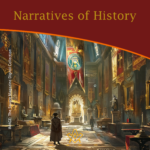 Narratives of History |
 A Very Royal Sesquicentenary |
 Unveiling the Enigma: Discover the Royal Society's Legacy and its Impact on Science. Delve into the fascinating history of the Royal Society, the prestigious UK academy shaping scientific progress since 1660. Explore its pivotal role in advancing knowledge, fostering collaboration, and unlocking the secrets of the universe. Prepare to be amazed! |
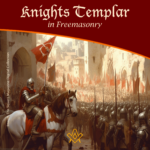 Knights Templar in Freemasonry Uncover the Mysteries of the Knights Templar in Freemasonry! Delve into the intriguing world where chivalry and symbolism intertwine. Discover the captivating rituals and ancient secrets behind the Knights Templar Masonic Orders. Explore the historical connection and delve into the enigmatic narratives that continue to fascinate enthusiasts today. Unveil the hidden truths now! |
 The Royal Arch stands as the rainbow of promise in the Ritual; it stands as the promise of the resurrection; of that which was lost and that it shall be recovered. The question arises as to whether the Master's Word was originally communicated in the Third Degree? On this point there is some diversity of opinion. Originally published in 1915, this insight into the Fourth Degree – the Holy Royal Arch – is as relevant today as it was over 100 years ago. |
 Unveiling the Mysteries of Druidism: Discover the Intriguing Connection with Freemasonry. Explore the ancient spiritual practice of Druidism and its fascinating ties to the enigmatic world of Freemasonry. Delve into the shared symbolism and rituals that have captivated minds for centuries. Unlock the secrets of these intertwined traditions today! |
 Uncover the legacy of freestone masons and their pivotal role in crafting medieval cathedrals. Discover the artistry behind their techniques, the hierarchy within their craft, and the enduring impact of their intricate carvings. A deep dive into the world of these master craftsmen awaits you! |
 Unearth the intriguing journey from Vincha Culture to Freemasonry. Discover how ancient building methods intertwine with modern Masonic philosophies. This exploration will shed light on the fascinating link between the Serbian term "shestarenye" and the symbolic significance of the compass in Freemasonry. |
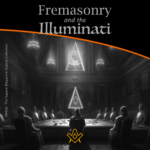 Freemasonry and the Illuminati Unravel the enigmatic world of Freemasonry and the Illuminati in our latest exposé. Dive into centuries-old mysteries, debunk conspiracy theories, and discover the truth behind these elusive societies. Are they puppet masters or mere myths? Join us as we dissect history and fact from fiction. |
 The Île des Templiers, or “Island of the Templars” lies within a leafy park in Paris. The execution site of Jacques du Molay, the last Grand Master of the Knights’ Templar bears a plaque with the epitaph ‘A cet endroit / Jacques de Molay / Dernier grand maître / de l'ordre du temple / a été brûlé le 18 Mars 1314’ (‘In this location / Jacques de Molay / Last grand master / of the order of the temple / was burned on 18 March 1314’) |
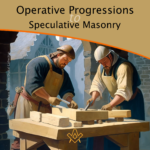 Operative Progressions to Speculative Masonry Both Operative and Speculative Masonry are an important part of the modern fraternity of Freemasonry, which combines elements of both traditions. Today, Freemasonry is a fraternity that is open to men of good character, who are interested in personal development and in making a positive contribution to their communities. |
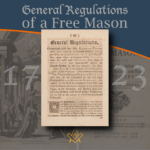 General Regulations of a Free Mason, 1723 General Regulations of a Free Mason as contained in Anderson's Constitutions of the Freemasons, published 1723. the Regulations are of great historical interest. Compiled by George Payne, the second Grand Master of the Premier Grand Lodge of England, they were printed in 1722/3, thus published just over five years after the formation of the Grand Lodge 1717. |
 The Genesis of the 1723 Book of Constitutions 2023, marks the three hundredth anniversary of the publication of the first printed Book of Constitutions of the Grand Lodge formally established in London two years previously. This is an anniversary whose significance extends beyond freemasonry. A paper by Andrew Prescott |
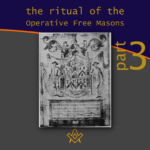 The Ritual of the Operative Free Masons - P3 Existing Operative Free Masons. The ritual I am about to refer, is that of "The Worshipful Society of Free Masons, Rough Masons, Wallers, Slaters, Paviors, Plaisterers, and Bricklayers." By Thomas Carr, M.D., P. M. Honorary Member of the Guild of Operative Free Masons |
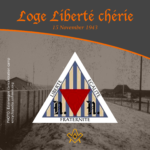 Liberté chérie was a Masonic Lodge founded in 1943 by Belgian Resistance fighters and other political prisoners at Esterwegen concentration camp. It was one of the few lodges of Freemasons founded within a Nazi concentration camp during the Second World War. |
 The Ritual of the Operative Free Masons - P2 If anyone doubts the fact that the formation of Speculative Free Masonry was due to and based upon Operative Free Masonry, it is quite easy to convince him of his error if he will only study the first Book of Constitutions. By Thomas Carr, M.D., P. M. Honorary Member of the Guild of Operative Free Masons |
 In 1881, Freemasonry rose from the ashes of a fire in the mining town of Kokomo, Summit County, Colorado. Corinthian Lodge No. 42, along with Kokomo, no longer exists but it holds the record of having been – at an elevation of 10,618 feet – the highest Masonic Lodge in the USA. |
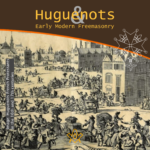 The Huguenots and Early Modern Freemasonry The Huguenots influence in the development of early modern Freemasonry at the time of the formation of the Grand Lodge in London around 1717 / 1723. |
 November is a month of reflection – perhaps due to the fact that we are getting close to the years' end – but also because Remembrance / Armistice Day (11 November) is a significant date in most countries' diaries. |
 Speculative Freemasonry, as practise by Grand Lodge of England, was officially born just over three hundred years ago, is today an international organisation, counting over six million members. It has been subjected to persecution, suppression, and abolition throughout its history. In its infancy, only a couple of decades after its official birth, it had already become a target. |
 The Ritual of the Operative Free Masons - P1 The original paper was written, first, to prove that Speculative Free Masonry was derived from Operative Free Masonry; second, to give some account of the Operative Free Masons, of their Ritual, and of their customs. By Thomas Carr, M.D., P. M. Honorary Member of the Guild of Operative Free Masons |
 American Fraternalism in the 19th and Early 20th Centuries The late 19th and early 20th centuries in the United States has been called the "Golden Age of Fraternalism." How did this come about and why was the idea of joining a fraternal organization so popular? We will explore this question and examine the regalia used by many fraternal organizations in this period. |
 Societas Draconistarum, meaning "Society of the Dragonists"– was a chivalric Order for selected nobility, founded in 1408 by Sigismund von Luxembourg, who through marriage became the King of Hungary (1387–1437) and later Holy Roman Emperor. The Order was fashioned after the military orders of the Crusades, requiring its initiates to defend the cross and fight the enemies of Christianity, in particular the Ottoman Empire. |
 The Perjured Free Mason Detected Was Samuel Prichard a perjured individual, or simply a misguided Freemason? Prichard's book "Free Masonry Dissected" published in 1730, is now used by many Masonic historians as a source of reference with regards to the introduction of the third degree into the Craft. But at the time it was published in 1730, it was not so well received by members of the Grand Lodge of England. |
 17th century and the Holy Royal Arch This article focuses on a period of transition between a point in time when we can safely and historically identify the first formation of what could be called as the ‘Royal Arch’ and the historical events that have preceded it. |
 Most Freemasons have heard the terms 'Operative' and 'Speculative' Masons, and this article helps to understand the difference: |
 Roberts' Constitutions of Freemasonry 1722 Published a year before Anderson's Constitutions, The Old Constitutions Belonging to the Ancient and Honourable SOCIETY OF Free and Accepted MASONS. Originally printed in London England; Sold by J. Roberts, in Warwick-Lane, MDCCXXII.(1722) |
 From 'Songs of religion and life', 1876 by John Stuart Blackie (1809-1895) |
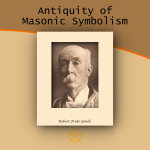 On the Antiquity of Masonic Symbolism Is the Symbolism of Masonry an inheritance derived from the old Masons who flourished before the era of the Grand Lodges (1717); or has it been borrowed from the Rosicrucians or others, after 1717? |
 Mason's Marks – from Egypt to Europe? Mason's marks have been a source of intrigue, not only to Freemasons but to historians and archaeologists. The use of simple pictograms have been employed for millennia by artisans to identify their work. But where did they originate and why? |
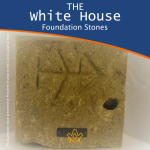 The White House Foundation Stones Further to the articles in our series on the history of the stone masons, we have a rather intriguing addition. During the 1950's renovation of the White House, President Truman retrieved more than 100 stone blocks with stonemasons marks. |
 What the Goose and Gridiron Tavern is in the ancient annals of London Freemasonry, The Green Dragon Tavern is to the memories of the Free-mason, of Boston and New England. |
 Auschwitz concentration camp: video photo article taken in 2013 |
 There are two things of importance happening this day - 27 January |
 Two approaches regarding the understanding of Freemasonry |
 Masonic Research in England c1930 An article which appeared in an American Masonic magazine, c1930 and which was reproduced in England, provoking a little controversy. |
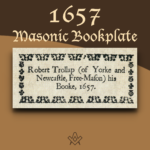 Masonic bookplates the ‘Brethren’s spiritual coats of arms and marks’ |
 The Unlawful Societies Act of 1799 Rebellious Freemasons and the 21st century |
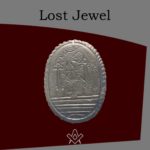 In 1912, Sarah Dowd of Dromore, Ireland, found a Masonic jewel dated 1517 - a date two hundred years before the establishment of Grand Lodge... |
 Freemasonry and Fascist Regime Interesting speech by the famous historian Prof. Aldo A. Mola, who links the fascist regime with the Masonic Associations. |
 Was famous Russian poet Alexander Pushkin a Freemason? And if so, was he a member of the lodge ‘for which all the lodges in Russia were destroyed’? |
 The Importance of Masonic Research Why is accurate - or authentic - Masonic research so important? The importance of making a daily advancement in Masonic knowledge is something that The Square is passionate about promoting. |
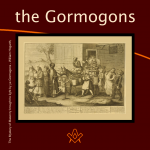 The Antient Noble Order of the Gormogons had a brief existence in the eighteenth century; they left few records or accomplishments, |
masonic knowledge
to be a better citizen of the world
share the square with two brothers

click image to open email app on mobile device






